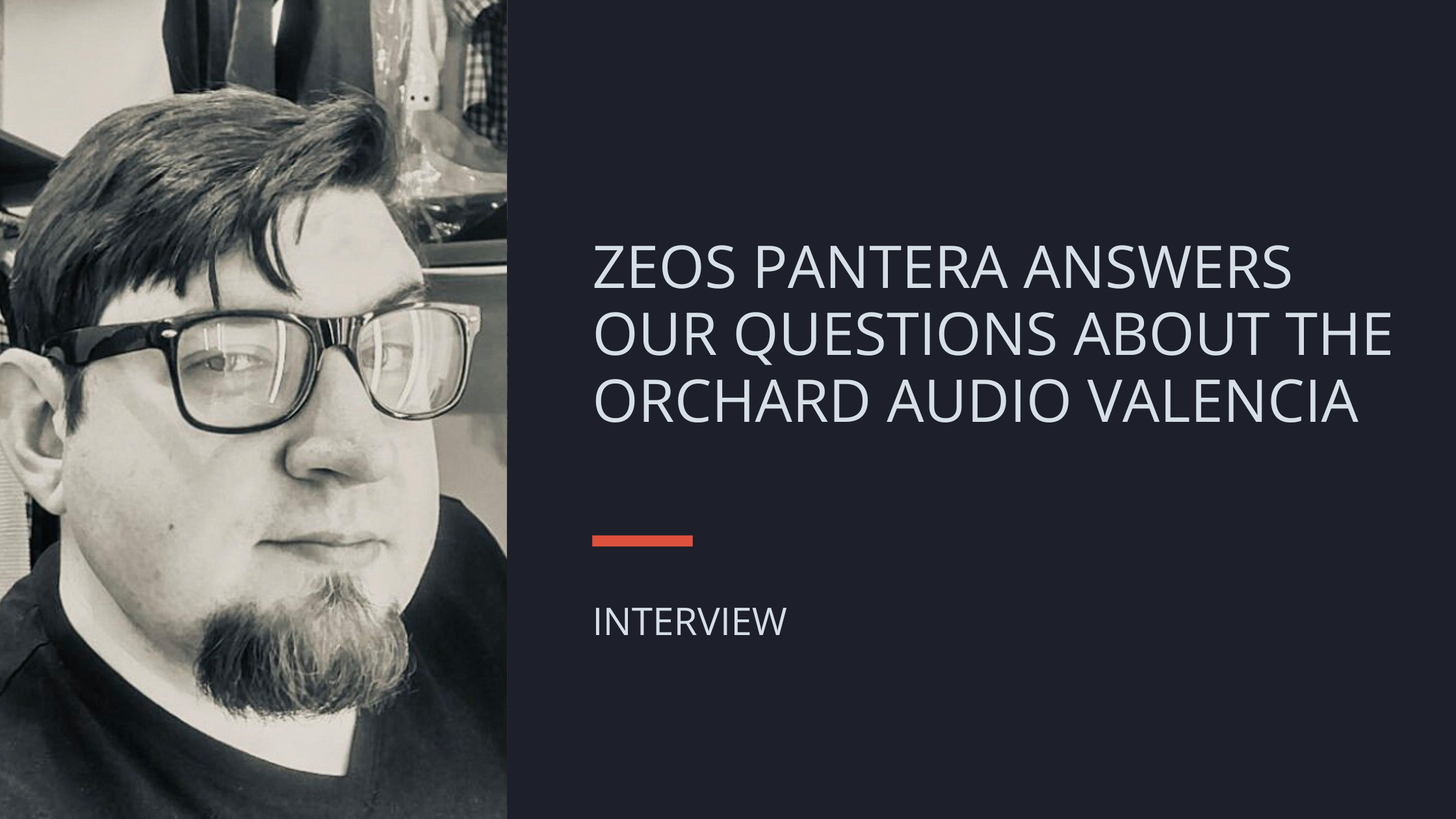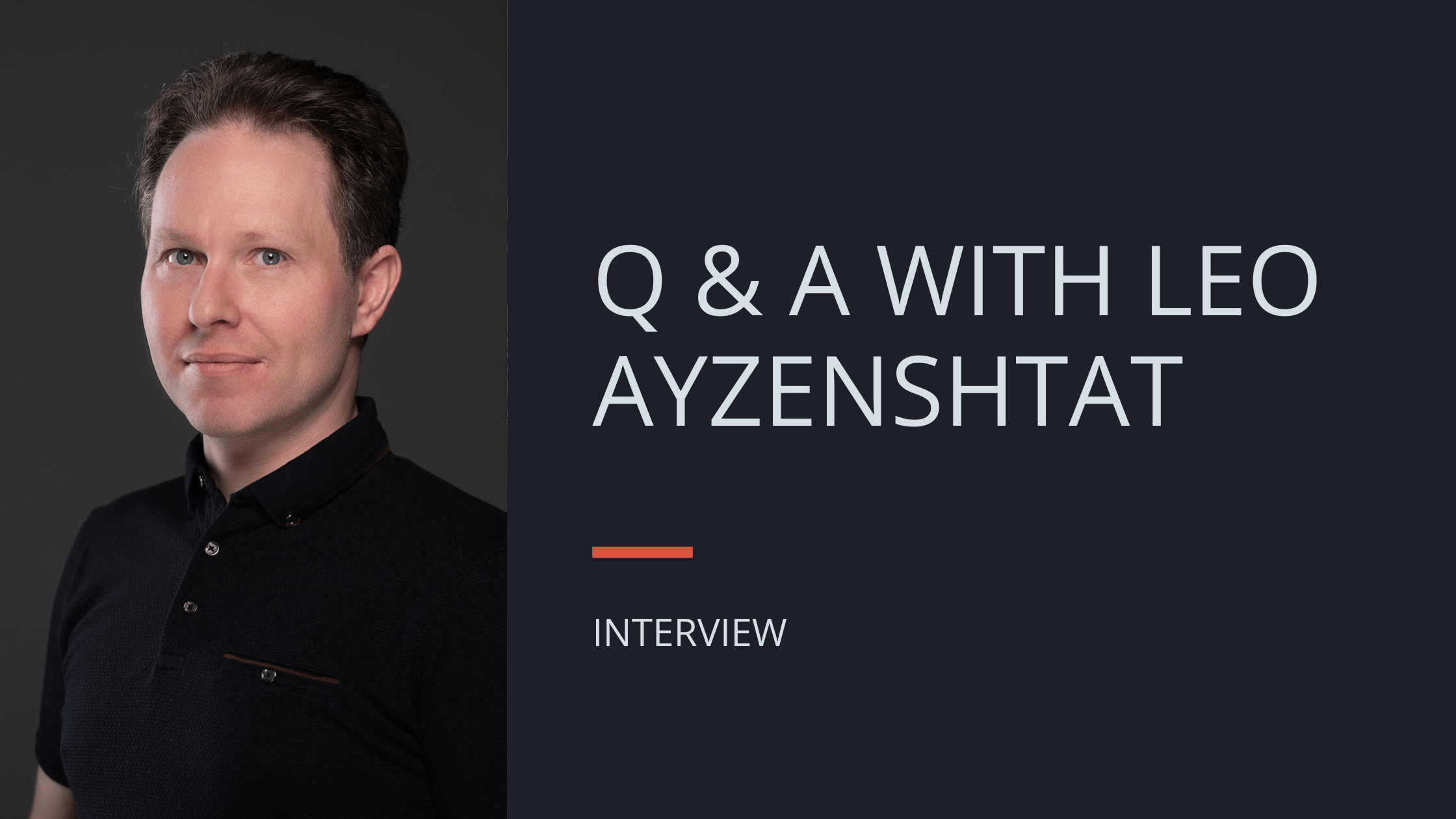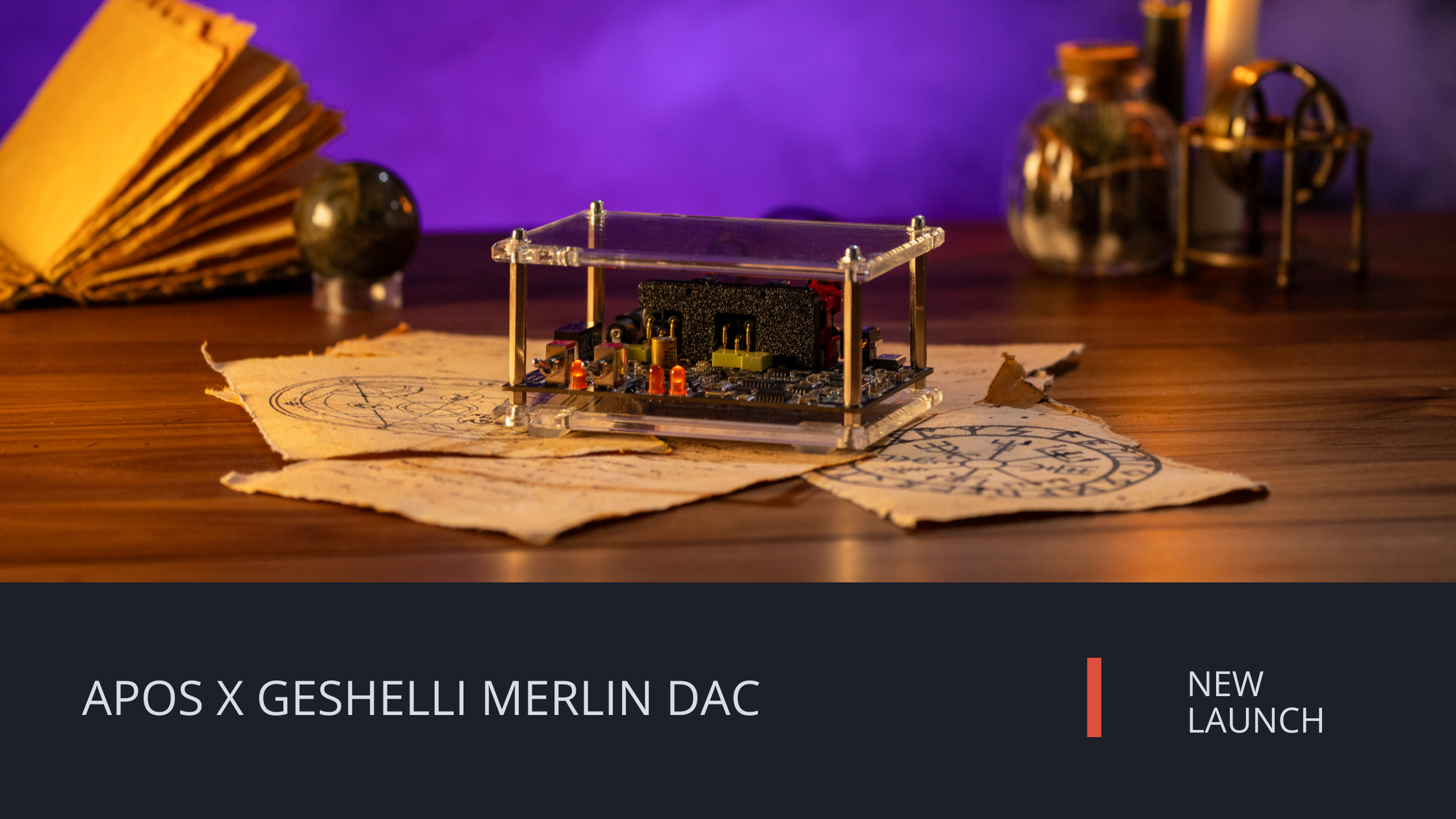
Q & A with Zeos Pantera
After more than a decade reviewing audio gear, Zeos of Z Reviews has seen it all—DACs with longer menus than the Cheesecake Factory, headphone amps with more buttons than a NASA shuttle cockpit, and a thousand different ways to complicate what should be simple. So when it came time to design his own gear with Leo of Orchard Audio, he went in the opposite direction.
In this conversation, Zeos unpacks his thinking behind Valencia—a minimalist power amp that strips away gain stages, volume knobs, and inputs in favor of clean, uncolored signal. We talk about market fatigue, feature bloat, and why sometimes the best audio gear is the one you don’t notice at all.
Tom: The reason I wanted to have a conversation with you is because of the comment you left on the Valencia product page. There, you wrote a lot about your mindset when developing the Valencia, and I thought it’d be cool to unpack it in a more official capacity than in the comments section (although I do encourage everyone to go check it out).
You wrote that, as an audio reviewer for the last 13 years, you’ve become bored with the audio scene. Let’s talk about that first. I think boredom is natural for anyone who’s spent as much time and energy as you have in this space. Have you simply experienced “too much of a good thing” or are there specific trends and product categories that you feel have gotten stale?
Zeos: I've just seen enough of what's out there, what's available, what's upcoming, and sort of figured out where the holes are. I would say several of my collaborations are there just to fill the gaps in the market.
Everyone discusses the bass of a headphone or the mods they have done to improve it, but no one has made a headphone designed specifically with bass response front and center. That's where the Harmonicdyne Eris comes in.
Everyone was always talking about having not enough power in their headphone amplifiers to run this or that headphone and all the recommended amplifiers were doing way more tasks than they needed to. Enter Valencia.
I feel like the only trend I don't agree with is end users measuring headphones to somehow “understand” things. Not trusting their own ears. I have no issue with companies, creators of headphones, amps, DACs, measuring everything. They have a product, they need to put it out, and they need to understand it.
One of the realities I have come to understand is that we all hear differently. If 1000 people try the same headphone, they will each hear something different, like or dislike, enjoy or hate. I think this causes a lot of friction, especially amongst reviewers and their fan bases. So I feel that going towards measurements and their plotted mathematical PNG graph is the way they satiate a fear of rejection. Saying you do or don't like the sound of something and instead replacing that with cold science that's much harder to disagree with may cause less disagreements but in the end every individual is going to hear something different. You have to accept that and try to help them understand it as well.
Tom: You say that the Valencia is your “intervention” for preventing the audio world from becoming more boring. Unpack that for us. Were there features or specs you specifically insisted on—or insisted against?
Zeos: I was looking to strip away the normal conventions you expect when picking out a headphone amplifier. All the features and functions I personally don’t use on a daily basis. My request from Leo was to make the design of the internals and signal path of Valencia as simple as possible.
Tom: I think some audiophiles may be scratching their heads when they see that the Valencia lacks a gain stage, multiple inputs, or even a volume knob. Walk us through why minimalism is so important for this product.
Zeos: Foregoing a volume control, basic high/low gain and input selection–those interruptions in the signal path, small as they may seem, do compound. So with most amps you end up with a piece of equipment that sounds like itself, not like the signal that is entering it. In some cases that might be the end goal, say with Class A gear, where the amplification design itself is put in place to modify the tonality of the signal. With Valencia, I don't have to worry about listening through that modification to hear the DAC before it.
Tom: As you said, the Valencia is designed “not to exist,” meaning that it doesn’t color the signal at all. You go so far as to say that if the output is boring, blame it on the other equipment in your audio chain. With this in mind, how are you “voicing” your system around it?
Zeos: That's the beautiful part of Leo's designs. I would call him a pure engineer more than an audio engineer. This is something you simply learn from listening to his bigger speaker amps, trying to understand why they're remarkably different from other speaker amplifiers. The fun of Valencia or all OA gear comes with being able to use the strength of all the equipment you put before it. Class A Preamplifiers turn the output of Valencia into a Class A sound, same with a tube amplifier or a linear DAC. It just passes through everything it receives and stays out of the way.
Tom: You mentioned using North American-sourced parts wherever possible. Why was that important to you, and what challenges did it create?
Zeos: Leo has already established a good relationship with several North American manufacturers for populated boards and their components. These boards cost substantially more than a mass produced board, in China for example. However, the security of the design and risk of copies being sold is far less. The added benefit of instant communication with the manufacturer for any mods or corrections has made the process far easier. I always find it appealing when buying equipment to have it created here at home. Some parts are obviously very difficult / impossible to source locally and would substantially raise the costs. Plus, having been designed and assembled before the tariff situation began, we may have to rethink how we want to use our build budget for future runs of the Valencia, perhaps moving even more components to local manufacturers.
Tom: A power amp for headphones is still pretty niche. How do you see Valencia fitting into a typical audiophile’s chain—or does it require a rethink of what’s ‘typical’?
Zeos: One of the most common ways I have told people to integrate Valencia is simply stick it at the end of their current chain—even going as far as to use an adapter wire to plug a headphone out directly into our amp. What you are doing is eliminating the limitations of whatever your system has. If you have a 2 WPC amplifier you absolutely love the sound of but cannot run your new hard-to-drive planar, just add a Valencia in the middle. The exact sound you love will push the new headphones without issue. I feel like many users are going to have fun just changing configurations. I have even found myself using DAPs & dongles with amazing sound quality to preamp Valencia without issue.
Tom: Having worked on the Gremlin and other products myself, one of the things I’m always thinking about when developing a product is how to minimize the number of returns we receive. I can’t help but picture someone accidentally using the Valencia without a pre-amp and blowing up their headphones or damaging their ears. Do you and Leo just have a lot of faith in your customers to follow directions?
Zeos: I have tried to market with the proper amount of fear. This is certainly not a normal amplifier that any normal person can purchase and understand or use properly. We have included a warning label atop every amplifier on a bright orange piece of paper explaining what needs to be done and the precautions that need to be taken. But I'm sure in the future someone will fail to understand what they have purchased or make a mistake, and we will hear about it.
Tom: Godspeed. From beta testing to final production, was there an unexpected challenge that nearly derailed the project or pushed it in a better direction?
Zeos: Nothing major, just a few quirks. We learned that the amplifier chips we used when told to turn “off” simply dropped from 35V output to around 7V instead of 0V. This required the addition of relays to the boards.
Another observed fault was a large electrostatic discharge into the input that caused a failure. This was sorted by adding more ESD protection to the input side of the amplifier.
Another change that had to be made was to the heat sink size internally. While able to push virtually any headphone ad infinitum, Valencia also has speaker taps to run 8 ohm speakers at up to 7 watts. Once the beta unit boards arrived, it was quickly established that the chosen heatsinks couldn’t sustain hours-long playback at high volume into such a load. So we essentially quadrupled the surface area of the sinks for the final boards.
Also, apparently 4.4 Pentagon connectors that face mount don't exist for less than $70 each. So the decision to only run a 4-pin XLR was made, and I went out of my way personally to get the adapters so that 4.4 could be used out-of-the-box .
Lastly, the internal wiring going from the main board to the front connector had to be meticulously sorted. Knowing full well the expense and quality of the headphone cables that were likely going to be plugged into this higher end amp, it only made sense to source high gauge, high quality, 16ga neotech wire for the internal interconnects and make sure to budget for that.
Tom: Let’s bring it back around to the question of boredom. Did working on Valencia reignite any excitement for you? What would you like to see more of in high-end audio going forward?
Zeos: I'm absolutely proud of how things turned out with Valencia. It's one of those universal tools that gets me to listen to everything all over again. Being able to push even the weakest old players and sources to the levels of running Sussavara easily should bring joy to any audiophile.
I feel like the audio world is tearing itself apart. Budgets in this hobby seem to only exist in the extreme high-end and extreme affordability sections. There are far more people interested in $100 pieces of gear than something like Valencia sitting at $2000. I'd like to see more companies offer budget options just to get their names recognizable to newcomers.


